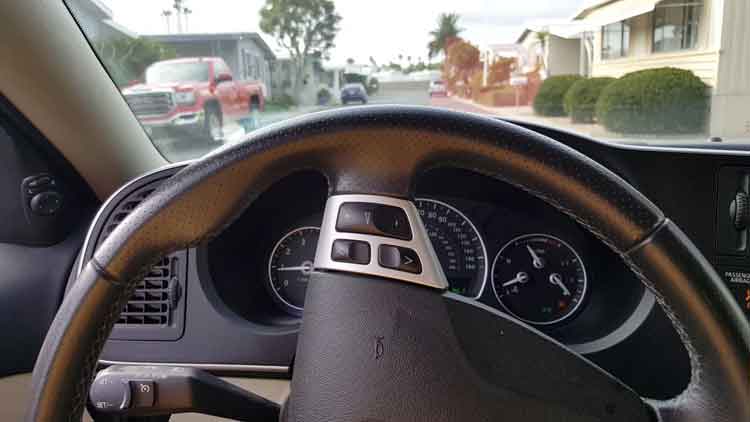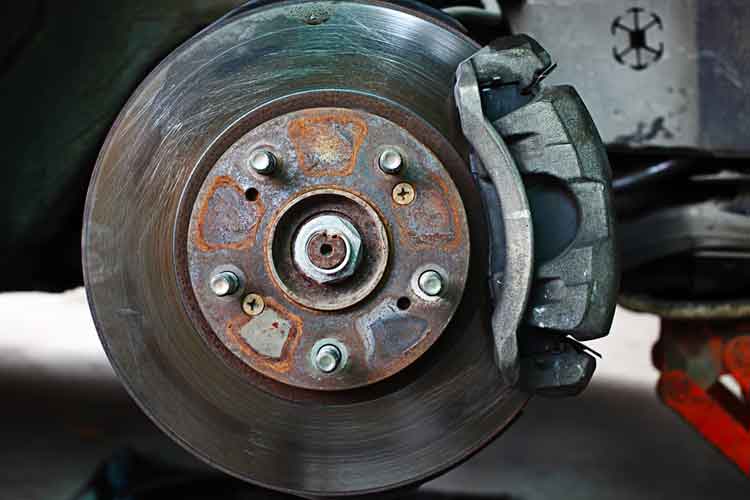The wheel bearings of your car take a lot of abuse. They support the entire weight of the car when it’s running.
That aside, the wheel bearings have to shoulder extra pressure while negotiating bad roads and the occasional curb, when the lateral force on the corners makes your wheels spin thousands of revolutions each minute.
Wheel bearings, unlike its engine counterparts, don’t get a constant supply of lubricating oils. Bad wheel bearing symptoms may come up once in a while, and as a car owner, you have to tackle them.
Contents (Jump to Topic)
Some common Bad Wheel Bearing Symptoms
Here are some symptoms indicating that you may need a wheel bearing replacement:
1. Snapping Sound

Image Credit: techno-fandom
A snapping, popping, or clicking sound indicates that you are driving with a bad wheel bearing. It means that the outer CV-joint of the wheel is damaged or worn out. But such sounds may also indicate inadequate clamping or excessive bearing endplay. The noise is usually heard while taking a sharp turn.
2. Grinding
This typically means there’s mechanical damage to a wheel-end system. It could mean a loss of integrity like raceway or roller damage. The grinding noise comes when there is a shift in the load or while taking a turn.
Also Read: 21 Must Have DIY Car Repair Tools
3. Clunking or Knocking

Image Credit: YouTube
A knocking or clunking noise means that the U-joints or CV-joints are overworked. The noise is usually caused by a backlash in differential gears, and may not indicate worn out wheel bearing symptoms. It’s normally heard while changing directions or changing gears.
4. Rumbling or Growling
Faulty electrical, tires or drivetrain components may cause these sounds. For defective wheel symptoms, the vibration is emitted while driving straight at a constant speed. The noise increases while turning the steering wheel to the right or left. The rumbling noise comes from opposite of the side which is defective.
5. Wobbling

Image Credit: YouTube
Worn out tires often cause wheel vibration or wobbling. It indicates a major misalignment in the wheel or suspension. It’s one of the most definitive bad wheel bearing symptoms and among the earliest signs of an extreme mechanical damage. Wheel vibrations can also happen if the lug nuts aren’t properly torqued.
6. Shuddering
Vibrations at constant speed are usually associated with damaged or worn out suspension or a misbalanced suspension system. It indicates a damage on the wheel bearing or hub.
7. Abnormal Side Pull

Image Credit: MIT Technology Review
A defective equalizer or caliper will lead to an abnormal side pull when the brakes of the car are applied. But it may also indicate worn rotors or brakes. Excessive run out can also lead to loose bearings causing the brakes to pull or pulsate. The common cause, however, is a warped rotor because of the break caliper not retreating.
8. Uneven Rotor

Image Credit: YourMechanic
A defective caliper or a bad equalizer usually causes an uneven rotor or brake pad wear. This is not exactly bearing-related. Excessive runouts may lead to uneven wear and tear of the rotor and brake pads. Non-retraction of the caliper is one of the common causes of a warped rotor.
9. Abnormal Tire Wear
There could be several causes for an abnormal wearing of the tire. Misalignment, damaged suspension components, and improper inflation lead to tire wear. While extreme wheel bearing looseness or wear could lead to abnormal worn out tires, it’s usually related to various other failures.
10. ABS Failure
In some extreme cases, external or internal sensors of a wheel could be damaged because of the excessive movement from too much endplay. ABS failure results from a major mechanical damage. In brake systems where the sensor is externally mounted, corrosion could lead to damage.
Also Read: Symptoms of Water in Gas Tank and how to fix it
Fixing Bad Wheel Bearings
We all know what can happen with a bad wheel bearing. Whenever it happens, the bearing needs a replacement. And it’s always advisable to get an authorized mechanic to handle it. The wheel bearing assembly of your car is a complex system. That aside, the wheel bearing replacement cost could be high for some cars. One misplaced part and the car may suffer irreparable damage.

Image Credit: YourMechanic
A wheel bearing, no matter how bad the condition is, don’t fail immediately. You have to carefully notice the bad wheel bearing symptoms. The bearings typically give a car owner some time before they call for a replacement. When a wheel bearing fails completely, it may lock up and prevent your car from moving. Driving with a noisy bearing also causes the sound to grow louder. Observe the faulty wheel bearing symptoms and replace them before the problem compounds.
You may not really need to replace the wheel bearings on both sides. Just because one has failed, there’s no reason to believe that the other bearings too will need a replacement. Wheel bearings of a car usually last a lifetime.

Image Credit: ThoughtCo
Also Read: 10 Important Tips on Selling your Car Online
Bad Wheel Bearing FAQs
Q: How far can you Drive with a Bad Wheel Bearing?
A: As per car experts, you can drive around 1000 miles with a bad bearing at slower speeds. However, it is not advised to drive with a bad bearing as it makes steering the vehicle hard, which can increase the chances of accidents.
Always look out for these bad wheel-bearing symptoms and ensure they are in good shape so that you can enjoy driving your vehicles safely.
Q: How to tell which Wheel Bearing is Bad?
A: Well, it’s easy! If your car has bad wheel bearings, it will produce a grinding sound while driving. Moreover, you will hear a snapping sound or a wobbling steering wheel.
Read this article to know more about the bad wheel bearing symptoms you should never overlook.
Q: What are the Risks of Driving with Bad Wheel Bearings?
A: There are several risks of driving with bad wheel bearings, including damaging the bearing unit permanently. It can even impact the drivability of the vehicle and can cost you thousands of dollars to repair.
Make sure the bearings are always in good condition before you take your car out for a trip.
Q: Is it safe to Drive with a Bad Wheel Bearing?
A: Not at all! You should never drive your car with a bad wheel bearing, as the tire may fall off. Instead, get the wheel bearing serviced on time to enhance their lifespan while improving the drivability of your car.
Q: Can a Bad Wheel Bearing Affect Acceleration?
A: Yes! As you accelerate the vehicle, you’ll notice more vibrations on the steering wheel. It doesn’t affect the engine’s performance anyways. But as you accelerate, you will see its outcomes inside the cabin.
Q: How long will a Wheel Bearing last after it Starts making Noise?
A: It depends on several factors, including the age of the bearing. If it’s a new bearing, it will last longer, and vice versa. However, we don’t recommend driving with a noisy wheel bearing.
Call your preferred mechanic and get the issue fixed.
Final Thoughts
As already said, replacing bad wheel bearings is quite expensive, largely because of the labor charges involved. Don’t try to do it yourself. There are innumerable parts to remove before you can actually get to the car’s wheel bearing, particularly in an all-wheel-drive or a front-wheel drive vehicle.
Also, you won’t have the necessary equipment to work on it. Getting a bearing in and out of the hub, sans a press, is a difficult job. Replacing the whole hub and the bearing as one unit is easier and most mechanics prefer to do it that way.
Remember, the first bad wheel bearing symptoms should prompt you to take your car for servicing. Ignoring the symptoms could lead to greater damage in the future.
